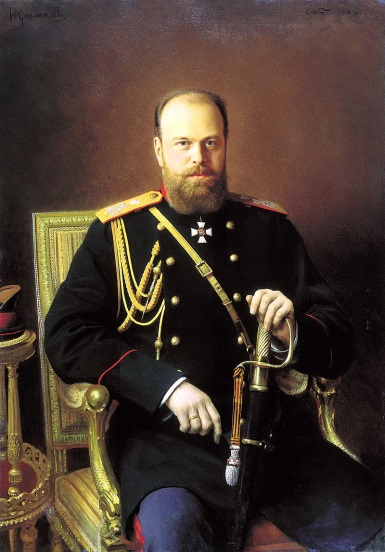
Following the assassination of his more liberal minded father Czar Alexander II in March 1881, Czar Alexander III pursues a more restrictive policy towards the Jews of the Russian Empire by implementing a series of temporary laws.
The assassination of Alexander II is followed by a wave of pogroms, attacks against Jewish communities, which begins in April 1881. For the most part, the pogroms emanate in the larger cities before spreading out to smaller villages. Unlike later waves of pogroms in 1903-1906 and 1917-1921, the pogroms of 1881 and 1882 are usually directed against Jewish property, not individuals, though there are approximately fifty casualties. During the spring and winter of 1881, there are large pogroms in Warsaw (Poland), Kiev (Ukraine) and Balta (Ukraine). There are an estimated 165-250 pogroms.
An investigation into the cause of the pogroms finds that the Jews “have succeeded in exploiting the main body of the population, particularly the poor, hence arousing them to a protest, which has found distressing expression in acts of violence.” (H.H Ben Sasson, A History of the Jewish People, Cambridge, MA: Harvard University Press, 1976, p. 882.) Alexander III blames his father’s liberal policies for his assassination and moves to consolidate his power into an absolute autocracy.
In May 1882, a series of laws, known as the May Laws, are passed which further restrict Jews to living in the Pale of Settlement and prohibits Jews from living outside of larger cities and towns, owning or managing real estate, leasing land, and operating their businesses on Sundays or other Christian holidays.
The major effect on Russia’s Jewish population, which numbers approximately four million, constituting more than 50% of the global Jewish population at the time, is that the pogroms and May Laws lead to a mass emigration of Russian Jewry. Between 1881 and 1914, more than 2.5 million Jews will leave their homes in Eastern Europe in hopes of finding a safer more secure existence that also offers the promise of freedom to continue practicing their religion.
“There is a great agitation for Jewish migration to America and Palestine. The common people have an entirely false impression of what is happening. . . The wild Russian bear will not be pacified until the Jew leaves Russia or is killed. Everyone is convinced of this fact, even in St. Petersburg.” (Szajkowski, Zoza, “How the Mass Migration to America Began,” in Jewish Social Studies, Vol. 4, No. 4 (Oct., 1942), pp. 300-301.)
While the vast majority of those emigrating will make their way to America, the pogroms and May Laws also awaken a need for Jewish self-defense, an interest in pursuing Jewish settlement in the Land of Israel and revolutionary socialism. The number of Hovevei Zion (Lovers of Zion) groups in Eastern Europe grows as does efforts to centralize them. In the midst of the pogroms, but before the implementation of the May Laws, BILU, a group of Ukrainian Jewish students was established with the purpose of creating agricultural settlements in the Land of Israel. The first members of BILU would arrive in Jaffa in July 1882.
The photo shows a reproduction of a painting Czar Alexander III. Photo Source: Wikimedia Commons, Public Domain.
